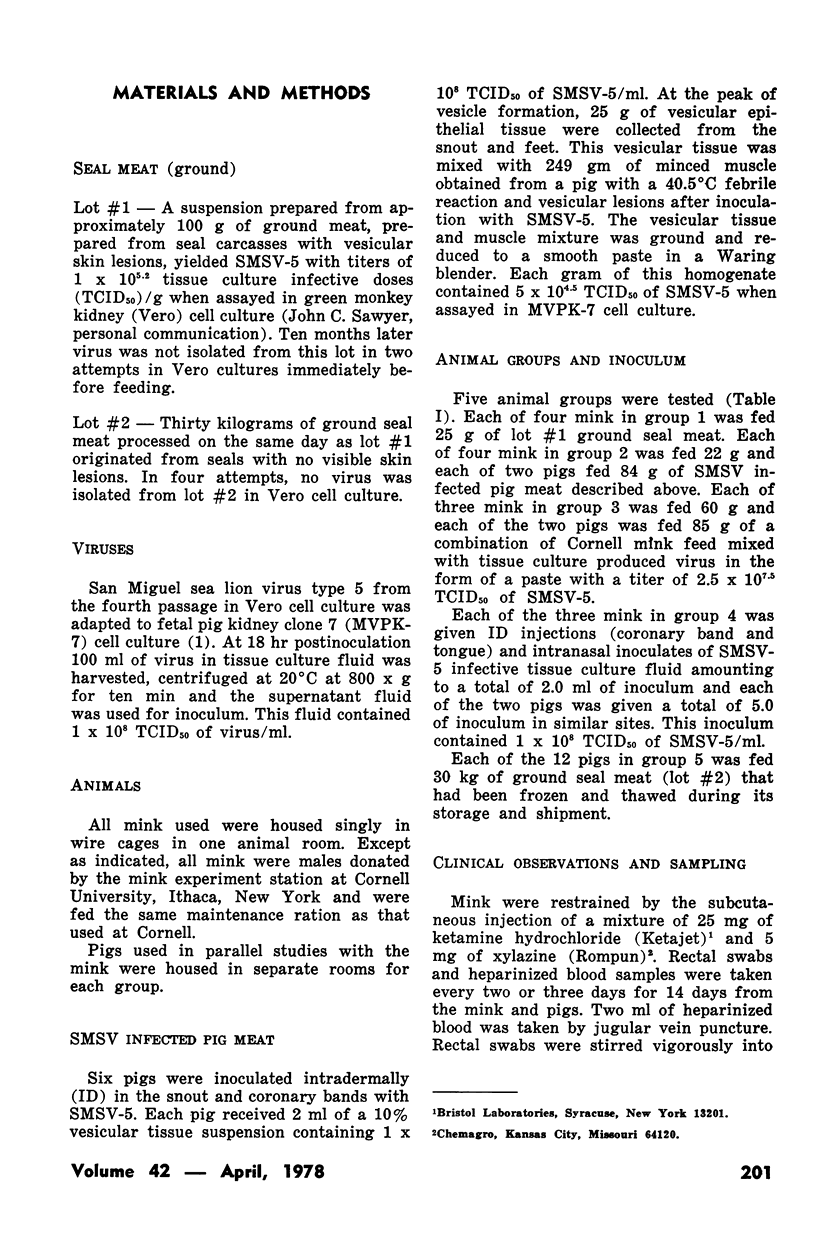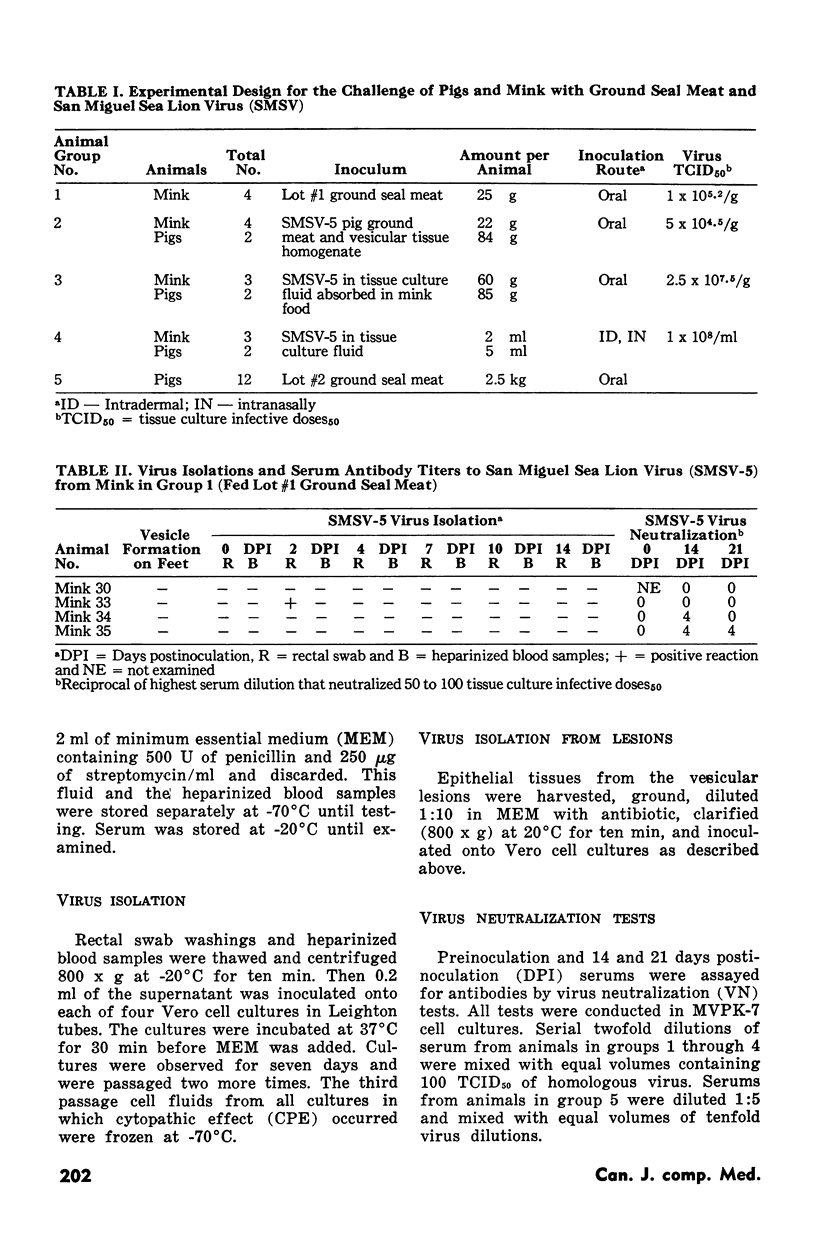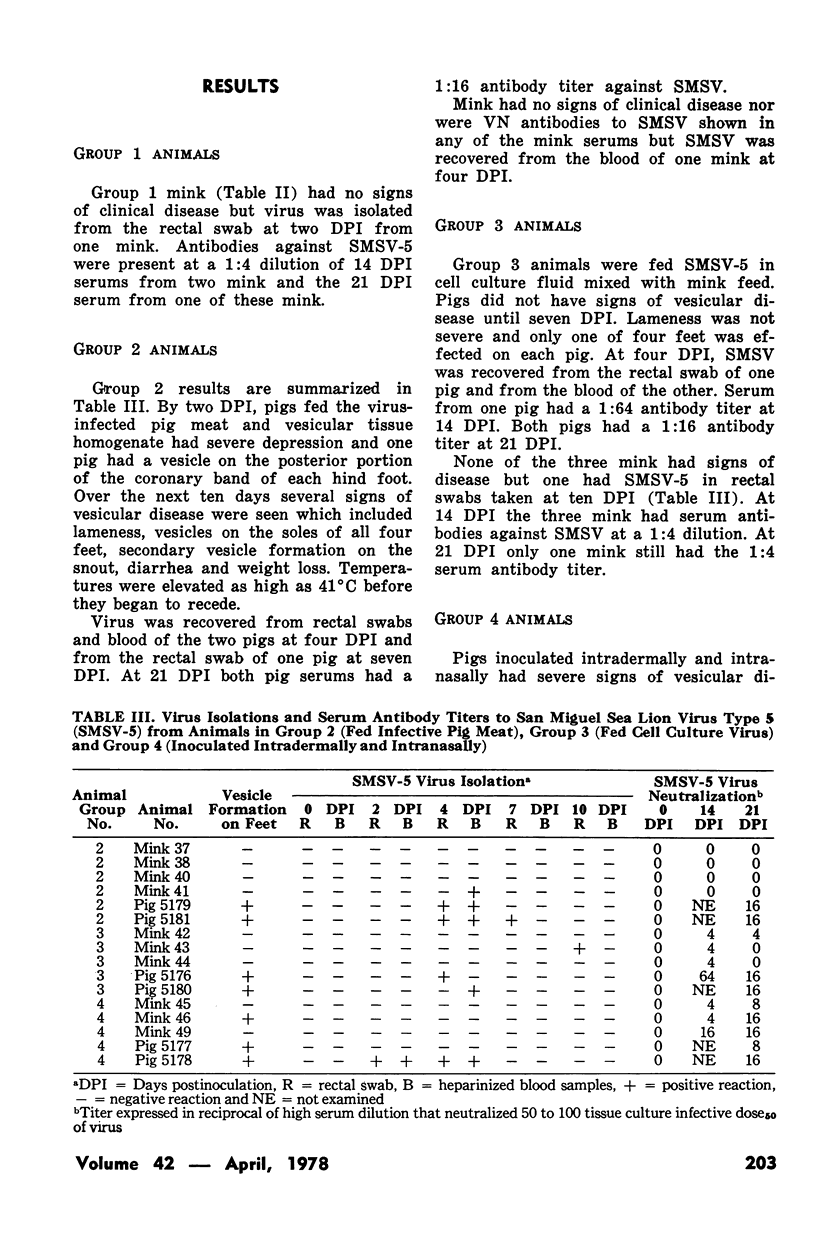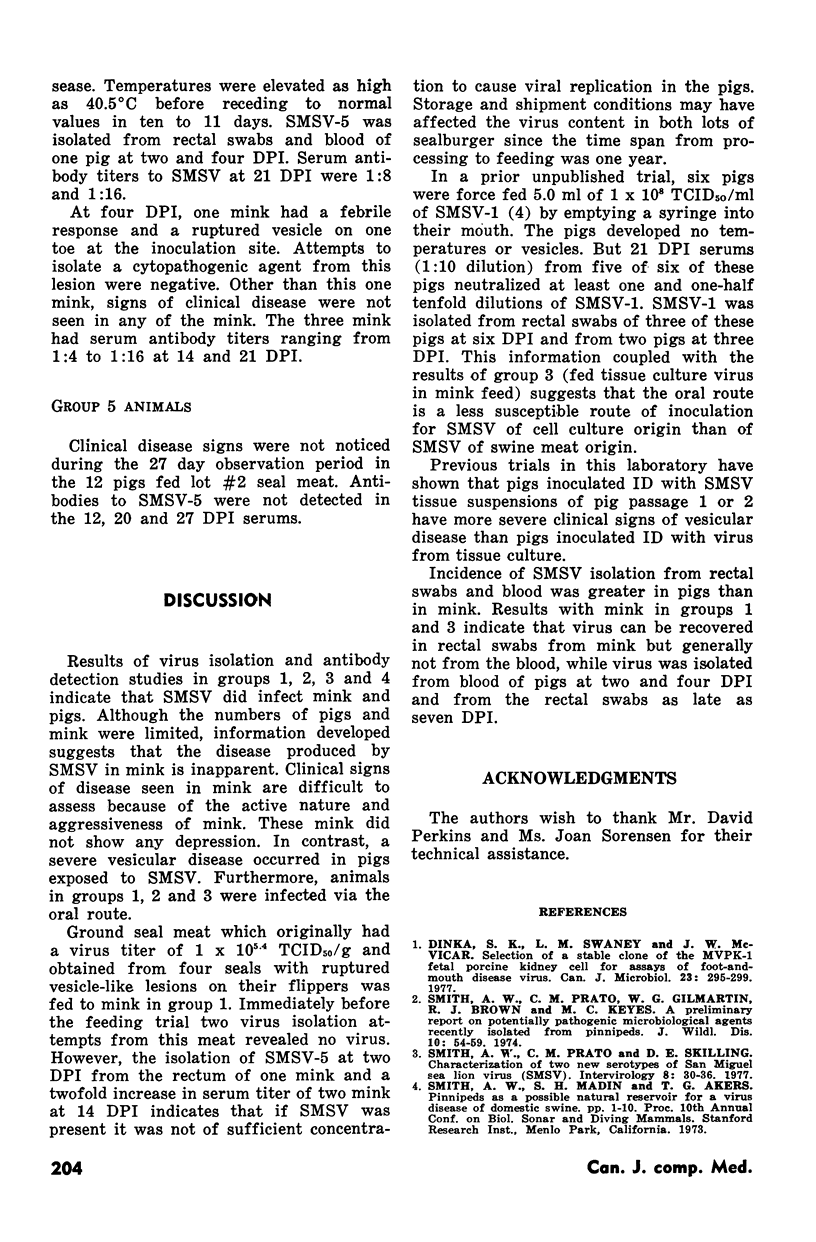Abstract
Mink became infected with San Miguel sea lion virus when fed ground meat from seal carcasses showing vesicular-like lesions in the skin. The mink also contracted the infection when they were fed San Miguel sea lion virus infected pig meat or cell culture propagated virus. San Miguel sea lion virus infection in mink was inapparent but the virus was isolated from blood and rectal swabs. Pigs treated similarly with the same virus preparations given to mink developed a severe vesicular disease syndrome similar to that produced by vesicular exanthema of swine. In a separate trial, pigs fed a large sample of commercial ground seal meat did not develop disease signs or antibodies. Further work is needed to assess the hazard of introducing San Miguel sea lion virus into swine on the same premises when potentially San Miguel sea lion virus infective seal meat is fed to mink.
Full text
PDF




Selected References
These references are in PubMed. This may not be the complete list of references from this article.
- Dinka S. K., Swaney L. M., Vicar J. W. Selection of a stable clone of the MVPK-1 fetal porcine kidney cell for assays of foot-and-month disease virus. Can J Microbiol. 1977 Mar;23(3):295–299. doi: 10.1139/m77-043. [DOI] [PubMed] [Google Scholar]
- Smith A. W., Prato C. M., Gilmartin W. G., Brown R. J., Keyes M. C. A preliminary report on potentially pathogenic microbiological agents recently isolated from pinnipeds. J Wildl Dis. 1974 Jan;10(1):54–59. doi: 10.7589/0090-3558-10.1.54. [DOI] [PubMed] [Google Scholar]
- Smith A. W., Prato C. M., Skilling D. E. Characterization of two new serotypes of San Miguel sea lion virus. Intervirology. 1977;8(1):30–36. doi: 10.1159/000148874. [DOI] [PubMed] [Google Scholar]


